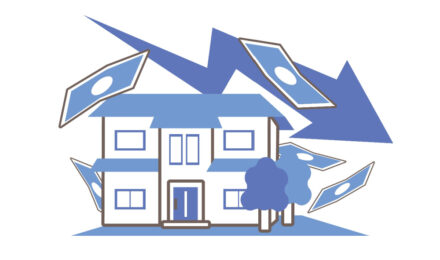Over the next few decades, the United States will undergo significant demographic shifts, reshaping the nation’s population both in size and composition. Several key factors contribute to this transformation. One major trend is the slowing rate of population growth, driven by younger generations choosing to have fewer children. In fact, in 2021, the U.S. population grew by just 392,665 people, or 0.1%—the slowest growth rate since the nation’s founding. While the total population continues to increase, the pace is decelerating, with far-reaching implications for society and the economy.
Key Demographic Trends
- From 1950 to 2020, the U.S. population grew from 160 million to 330 million in just 70 years.
- At the current rate, it will take 80 years to add another 100 million residents.
- U.S. fertility rates dropped by 4% in 2020, reaching a record low.
- Annual deaths rose from 2.4 million in 2009 to nearly 2.9 million by 2019, and pandemic-related fatalities pushed this number to approximately 3.4 million in 2020.
These shifts will have profound societal and economic consequences. As America becomes more diverse and its population ages, the country will struggle to sustain its workforce, maintain economic dynamism, and meet growing demands in critical sectors.
The Aging and Diversifying Population
America is aging rapidly due to declining fertility rates, slower population growth, increasing life expectancy, and reduced immigration. According to the U.S. Census Bureau, by 2034, Americans aged 65 and older will outnumber those under 18 for the first time in history. Additionally, as many immigrants from Asia and Latin America tend to be younger and have higher fertility rates, the U.S. population will become more ethnically diverse.
This shift is already visible in major metropolitan areas like New York and Los Angeles. Currently, about 23% of Americans aged 65 and older are people of color, and this figure is expected to rise to 45% by 2060. These changes will have significant implications for workforce development, necessitating cultural and linguistic competencies to meet the needs of a diverse population.
Workforce Strain and Economic Pressures
The evolving demographic landscape will place considerable pressure on the American workforce. One of the biggest challenges will be the increasing number of people exiting the labor force, a trend expected to persist in the coming decades. Although more older Americans are staying employed than in previous generations, their numbers will not be sufficient to meet the growing labor demand, particularly in key sectors like healthcare and service industries.
Labor shortages are projected to continue as many Americans opt for retirement rather than returning to work—a trend accelerated by the COVID-19 pandemic. Additionally, as the workforce shrinks, contributions to Social Security will decline while the number of beneficiaries rises, creating fiscal challenges for Congress and the nation as a whole.
Some analysts argue that immigration could help sustain economic vitality and workforce stability, ensuring that the U.S. remains competitive on the global stage. However, others contend that the current immigration system fails to provide the skilled workers needed to support economic growth.
Caring for an Aging Population
The number of Americans aged 85 and older is expected to triple by 2060, driven largely by aging baby boomers—those born between 1946 and 1964. This trend will significantly increase demand for home healthcare and other elder care services. While people are living longer, many face chronic illnesses and age-related conditions requiring specialized care.
The rise in age-related diseases such as Parkinson’s, Alzheimer’s, and cognitive decline will further strain healthcare services. Essential daily activities—including medication management, financial oversight, meal preparation, personal care, housekeeping, and transportation—will require expanded support systems. Ensuring access to high-quality elder care and a well-trained healthcare workforce will be critical to addressing these needs.
Challenges in the Healthcare Workforce
Even before the COVID-19 pandemic, the U.S. faced a healthcare workforce shortage, affecting professionals across the spectrum from home health aides to surgeons. This issue is compounded by the impending retirement of many healthcare workers. According to the Association of American Medical Colleges, the U.S. could face a shortage of up to 124,000 physicians by 2034. Similarly, the American Nurses Association warns that high turnover rates and retirements are straining the nursing workforce, while enrollment in nursing programs is not expanding quickly enough to meet growing demand.
Conclusion
In the coming decades, the United States will confront profound demographic changes that will shape its economic landscape, labor force, healthcare system, and social structures. These shifts will impact infrastructure, education, healthcare accessibility, retirement planning, and workforce sustainability. While some experts believe that immigration could help offset these challenges and bolster economic competitiveness, others argue that the current system is inadequate for meeting the nation’s labor needs.
As the country navigates these demographic transformations, policymakers and business leaders must develop strategic solutions to ensure economic stability, workforce resilience, and quality of life for an aging and diversifying population.
Over the next few decades, the United States will undergo significant demographic shifts, reshaping the nation’s population both in size and composition. Several key factors contribute to this transformation. One major trend is the slowing rate of population growth, driven by younger generations choosing to have fewer children. In fact, in 2021, the U.S. population grew by just 392,665 people, or 0.1%—the slowest growth rate since the nation’s founding. While the total population continues to increase, the pace is decelerating, with far-reaching implications for society and the economy.
Key Demographic Trends
- From 1950 to 2020, the U.S. population grew from 160 million to 330 million in just 70 years.
- At the current rate, it will take 80 years to add another 100 million residents.
- U.S. fertility rates dropped by 4% in 2020, reaching a record low.
- Annual deaths rose from 2.4 million in 2009 to nearly 2.9 million by 2019, and pandemic-related fatalities pushed this number to approximately 3.4 million in 2020.
These shifts will have profound societal and economic consequences. As America becomes more diverse and its population ages, the country will struggle to sustain its workforce, maintain economic dynamism, and meet growing demands in critical sectors.
The Aging and Diversifying Population
America is aging rapidly due to declining fertility rates, slower population growth, increasing life expectancy, and reduced immigration. According to the U.S. Census Bureau, by 2034, Americans aged 65 and older will outnumber those under 18 for the first time in history. Additionally, as many immigrants from Asia and Latin America tend to be younger and have higher fertility rates, the U.S. population will become more ethnically diverse.
This shift is already visible in major metropolitan areas like New York and Los Angeles. Currently, about 23% of Americans aged 65 and older are people of color, and this figure is expected to rise to 45% by 2060. These changes will have significant implications for workforce development, necessitating cultural and linguistic competencies to meet the needs of a diverse population.
Workforce Strain and Economic Pressures
The evolving demographic landscape will place considerable pressure on the American workforce. One of the biggest challenges will be the increasing number of people exiting the labor force, a trend expected to persist in the coming decades. Although more older Americans are staying employed than in previous generations, their numbers will not be sufficient to meet the growing labor demand, particularly in key sectors like healthcare and service industries.
Labor shortages are projected to continue as many Americans opt for retirement rather than returning to work—a trend accelerated by the COVID-19 pandemic. Additionally, as the workforce shrinks, contributions to Social Security will decline while the number of beneficiaries rises, creating fiscal challenges for Congress and the nation as a whole.
Some analysts argue that immigration could help sustain economic vitality and workforce stability, ensuring that the U.S. remains competitive on the global stage. However, others contend that the current immigration system fails to provide the skilled workers needed to support economic growth.
Caring for an Aging Population
The number of Americans aged 85 and older is expected to triple by 2060, driven largely by aging baby boomers—those born between 1946 and 1964. This trend will significantly increase demand for home healthcare and other elder care services. While people are living longer, many face chronic illnesses and age-related conditions requiring specialized care.
The rise in age-related diseases such as Parkinson’s, Alzheimer’s, and cognitive decline will further strain healthcare services. Essential daily activities—including medication management, financial oversight, meal preparation, personal care, housekeeping, and transportation—will require expanded support systems. Ensuring access to high-quality elder care and a well-trained healthcare workforce will be critical to addressing these needs.
Challenges in the Healthcare Workforce
Even before the COVID-19 pandemic, the U.S. faced a healthcare workforce shortage, affecting professionals across the spectrum from home health aides to surgeons. This issue is compounded by the impending retirement of many healthcare workers. According to the Association of American Medical Colleges, the U.S. could face a shortage of up to 124,000 physicians by 2034. Similarly, the American Nurses Association warns that high turnover rates and retirements are straining the nursing workforce, while enrollment in nursing programs is not expanding quickly enough to meet growing demand.
Conclusion
In the coming decades, the United States will confront profound demographic changes that will shape its economic landscape, labor force, healthcare system, and social structures. These shifts will impact infrastructure, education, healthcare accessibility, retirement planning, and workforce sustainability. While some experts believe that immigration could help offset these challenges and bolster economic competitiveness, others argue that the current system is inadequate for meeting the nation’s labor needs.
As the country navigates these demographic transformations, policymakers and business leaders must develop strategic solutions to ensure economic stability, workforce resilience, and quality of life for an aging and diversifying population.




